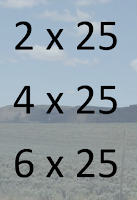So you've been thinking about trying a Number Talk as part of your classroom instruction?
Okay, let's just lay it out there:
Get over your fears and all of the excuses and
JUST GO FOR IT!
I love strategies that transcend specific topics, grade levels, or intelligences.
That is why I am in love with Number Talks!
There are so many resources out there that can help us begin to craft our Number Talks (and if you're wondering... the Number Talk book by Sherry Parrish is a good resource, but you don't need it to run a Number Talk!).
I first posted about Number Talks in October 2016. In that earlier post, I described how to do a Number Talk and included some great links to other resources and shared a video showing a brave teacher who recorded her very first effort facilitating a Number Talk with her young students. Click HERE to see my earlier post.
Keep reading to see more links to support using Number Talks in your classroom....
Need to be convinced even more that using a
Number Talk is a powerful teaching practice?
- NCTM has published a set of Effective Teaching Practices. Among those practices, we can easily and strongly support at least two of them through the use of Number Talks:
- Facilitate meaningful mathematical discourse
- Elicit and use evidence of student thinking
- The Common Core Standards contain Standards of Mathematical Practices. Within these standards are three particular ones that align nicely with Number Talks:
- SMP2 - reason abstractly and quantitatively
- SMP3 - construct viable arguments and critique the reasoning of others
- SMP7 - Look for and make use of structure (Sherry Parrish says that Number Talks were specifically designed to address this one)
- Our school district uses the PARCC Assessment to measure annual growth. Nearly 40% of the assessment asks students to Model and Reason when answering questions. Number Talks help students learn how to reason about numbers and express their ideas clearly so others can understanding their thinking. Not just a good skill to have for testing, but a great one to have for math in the real world beyond the walls of the classroom!
- Kathy Richardson is a name we probably recognize. She is a leading contemporary in the field of mathematics education. In our school district, we use her book series Developing Number Concepts in the primary grades to support our early numeracy assessments. Take a look at what Kathy Richardson has to say about Number Talks:

- STILL not convinced? Check out this 15-minute video from Stanford University Professor Jo Boaler whose work on brain research and Growth Mindset can be seen in many schools across America! I love how this video offers specific mathematical examples and some research to support the use of Number Talks.
 |
Jo Boaler, Stanford University, Number Talks
https://www.youcubed.org/resources/stanford-onlines-learn-math-teachers-parents-number-talks/ |
CCPS Educators Only
Want a classroom-ready Number Talk that aligns with our CCPS Module 3?
Look in your Module 3 Mathematics folder in Schoology
...and EVEN MORE RESOURCES (as promised)
to support your efforts to use Number Talks as a regular strategy in your classroom
PreK-Grade 5
Shametria Rout was a guest blogger on the
Minds in Bloom mathematics blog and did a really nice job of addressing Number Talks in her post. Whether you are just beginning your Number Talk journey or Number Talks are already deeply embedded in your instructional repertoire, I think you will find some good stuff to add to your toolkit.
Click HERE to see Shametria's post.
PreK-Kindergarten
Here is VIDEO of a Kindergarten class doing a Number Talk with Rekenreks. Even though Number Talks are typically done with no manipulatives and definitely no paper and pencil, I think you will agree that this was an effective exploration for these young learners.
Click HERE for the video.

Kindergarten-Grade 5
Looking for some "ready-made" Number Talks? Then you've got to check out this
S'more site created by Amy Storer. She has put together a Powerpoint collection of Number Strings that you can use with students organized by grade levels. The slides are NOT intended to be used as a presentation in one class period, but rather, plan to use just ONE SLIDE for each Number Talk and present the related equations one at a time allowing each to build on the others of the previous equation. The image to the left comes from her Grade 3-5 Multiplication series. Here, you would present just the 2x25 to kick things off (cover up the other equations). Ask students for an answer and be sure to ask "HOW DO YOU KNOW?". Be sure to solicit several different methods for determining the solution of 50. Then present the next problem 4x25 and listen for the magic of students learning to express their understanding of numbers as they explain the various ways they determined 4x25 is 100 – I think you will hear
at least 3 or 4 DIFFERENT ways that students arrived at 100 if you just give students time to think and talk.
Click HERE to see 'Smore (
sometimes I crack myself up!)

Kindergarten-Grade 5
As if that were not enough... here is another site with ready-made Powerpoint slides organized by grade level (K-5).
Be sure to notice the grade level tabs at the top of the page. Like the previous site, these strings of expressions are not intended to be presented during one class period -- each slide is it's own Number Talk, so there is enough here to last you the entire school year! These Powerpoint slides are designed to show just one equation at a time when you play the presentation.
Click HERE to see this plethora of slides you can use with your students.
Grades 3-5
Yep, here are a few more Number Talks that you can use tomorrow in your classroom (grades 3-5). This .pdf document has dozens of examples from Sherry Parrish's book
Number Talks – find the one that can help you get started in your own classroom.
Click HERE to access this file.

























